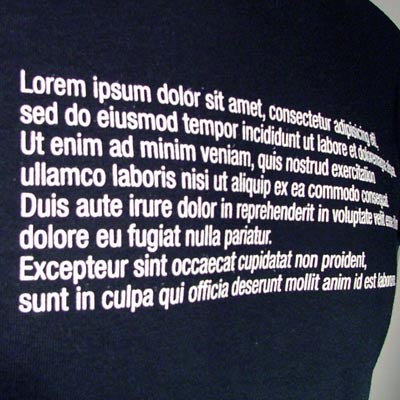Getting Real is a must read for all marketers! The impact Agile Development is having on product management is as revolutionary as the changes that social media are having on marketing communications. In my opinion, an alternative title for Getting Real could have been “The New Rules of Software Development,” because the strategy outlined is such a radical paradigm shift. Seth Godin stated “every once in a while, a book comes out of left field that changes just about everything. This is one of those books. Ignore it at your peril.” His comments could not be more true. There really is no excuse for not reading this book ASAP. It takes about 2-3 hours from cover-to-cover and it is available online in HTML for free. There is also a hard copy version for $25 and a PDF for $19. I read the free version online, but I have already been to Amazon.com to purchase a few hard copies for myself and my colleagues.
Included in this post is a synopsis of some of my favorite essays in the book. The hardest part of writing the post was trying to narrow the best content down to 10-15 points, but these were my favorites:
Lean Software Design
There is an excellent quotation from Steve Jobs’ discussing iTunes, which sums up the essence of the 37 Signals design principles. “We don’t want a thousand features. That would be ugly. Innovation is not about saying yes to everything. It’s about saying NO to all but the most crucial features.”
- Eliminate Preferences – “For customers, preference screens with an endless amount of options are a headache, not a blessing.” For developers, preferences create more software, which has to be coded, tested and maintained increasingly complexity and release cycles.
- Feature Bloat – Instead of asking people what features they want included why not ask people what they don’t want? “If you could remove one feature, what would it be?” “What don’t you use?” “What gets in your way the most?”
- Postpone Scaling – Too many developers focus on building software that scales for millions of users, but only a small percentage of web applications will reach such levels of popularity. Instead focus on creating a “Creating a great app and then worry about what to do once it’s wildly successful.” Overcapacity is a good problem to have.
I think another way to summarize the philosophy is – take the opposite approach of Microsoft Office. Word, Excel, Outlook and PowerPoint are jammed full of thousands of advanced features that only 1% of the end-user population uses, but consume significant memory and CPU cycles degrading performance.
Traditionally Underinvested Areas
Getting Real stresses the need to focus on elements of the customer experience that most software designers under-estimate. There were four examples I particularly enjoyed.
- Registration– Make the registration process painless. Allow users to go from sign-up to login in just 1 minute. Offer a free version that requires no credit card details. Avoid long registration forms, call backs, appointments or special passwords.
- Startup – Most designers minimize investment in the startup screen design. “Unfortunately, the customer decides if an application is worthy at this blank slate stage — the stage when there’s the least amount of information, design, and content on which to judge the overall usefulness of the application.”
- Errors – Some of the most memorable experiences you users will have are when the application doesn’t work. 37 Signals recommends defensive design principles to handle error screens and crisis points.
- Cancellation– Make the cancellation process painless. Avoid traps, confusion and intimidation. Don’t require “any email to send, special form to fill out, or questions to answer.” Allow end-users to export data from the application.
Launching the Product
Getting Real offers some excellent suggestions about how to launch a web-based application in today’s climate. Leveraging social media to create a buzz maximizes the launch event.
- Avoid Public Betas – 37 Signals recommends private betas to solicit feedback from end-users. “Public betas are bullshit. If it’s not good enough for public consumption don’t give it to the public to consume.”
- Teasers – Mid-way through the development cycle begin to post blogs about your upcoming new product launch. Try to engage mavens who are on the cutting edge and will start a buzz online. Collect feedback via e-mail.
- Preview – A few weeks before the launch begin to preview features. Offer behind-the-scenes access to an elite group. Offer “golden tickets” to selected users. For the general public post screenshots or a manifesto to create a buzz.
Minimize Process
Getting Real is also chalked full of sage advice about how to optimize productivity in the software design and development process.
- No Functional Specs – Linus Torvalds, creator of Linux states “A spec is close to useless. I have never seen a spec that was both big enough to be useful and accurate…It’s the single worst way to write software, because it by definition means that the software was written to match theory, not reality.
- Kill the Garbage Copy – Get rid of the lorem ipsem garbage in the design process. “You need real copy to know how long certain fields should be. You need real copy to see how tables will expand or contract. You need real copy to know what your app truly looks like.”
- Don’t Have Meetings – “They break your work day into small, incoherent pieces that disrupt your natural workflow…They usually convey an abysmally small amount of information per minute…Every minute you avoid spending in a meeting is a minute you can get real work done instead.”
There are a few other principles that I loved so much I plan to write dedicated posts on them. But don’t wait for my blog – go read this book now!












One Comment